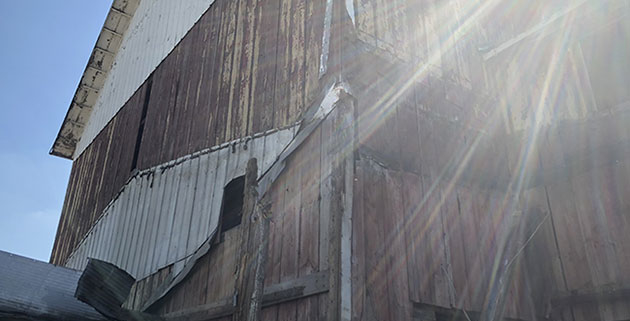Naperville developer plans, memorial to early Will County settler – Daily Herald – 1/19/2018
Naperville developer plans, memorial to early Will County settler – Daily Herald – 1/19/2018
Article Source
A memorial to one of Will County’s earliest settlers is part of the plan for a subdivision on land that long had remained with descendants of the Clow family.
Two stone structures, “held together with moss and mud,” on the site at Book Road and 103rd Street in south Naperville will form the basis for the memorial developer Nick Stanitz intends to build, pending approval of his plan.
Stanitz, president and owner of Oak Hill Builders & Developers Inc., is proposing a subdivision of 61 houses on 31.5 acres he bought from Betty Clow, 96, after the death of her daughter, Julie Clow, 57, in late 2016.
The land was the last parcel of a swath of Naperville and Bolingbrook that settler Robert Clow, along with his six sons and two daughters, bought in 1844 for $1.25 an acre, according to a 1983 book called “Naperville Area Farm Families History.” The family’s settlement eventually totaled 640 ares, or one square mile.
At one point, there were eight Clow brothers in Will County, and institutions such as Naperville’s Clow Elementary in Indian Prairie Unit District 204 and Bolingbrook’s Clow International Airport now bear the family name.
McDonald Farm in Naperville, home of the Conservation Foundation, also rests on 60 acres donated Lenore Clow McDonald. And Riverview Farmstead Preserve in Will County includes a limestone house and two barns built by the Clows in the mid-1800s.
The 31.5 acres at Book and 103rd functioned as a dairy farm until about five years ago, and Stanitz said the Clows kept planting oats and beans until selling the land.
Oak Hill Builders & Developers, Inc. this week received preliminary approval to build 61 houses on 31.5 acres at Book Road and 103rd Street in Naperville, which the company recently bought from the Clow family. Ancestors of Betty Clow, 96, who sold the land, were among Will County’s earliest settlers.
Oak Hill Builders & Developers, Inc. this week received preliminary approval to build 61 houses on 31.5 acres at Book Road and 103rd Street in Naperville, which the company recently bought from the Clow family. Ancestors of Betty Clow, 96, who sold the land, were among Will County’s earliest settlers. – Bev Horne | Staff Photographer
Stanitz, who has built roughly 500 houses in Naperville, including many in the Ashbury and Stillwater subdivisions, said he talked with Betty and Julie Clow for five years about buying the land. When it was put up for sale, he said other construction companies offered bids, but Betty chose his.
“She thought a lot about her neighbors,” Stanitz said. “She wanted a developer in there that would be an asset to the neighbors, not a detriment. So I worked with her through the entire project.”
Stanitz said he went door-to-door explaining his plan to residents in the Clow Creek Farm and River Run subdivisions that border the property. The houses Stanitz plans to build, mostly two-story models between 3,400 and 4,000 square feet, will join the Clow Creek Farm Homeowners Association, he said.
Stanitz’s work to inform neighbors and his reputation as a builder won over members of the planning and zoning commission, who unanimously recommended approval by the city council. The council is expected to consider the application at a future meeting.
A 31.5-acre farm at Book Road and 103rd Street in Naperville, which had been in the Clow family since 1844, now is slated to become a subdivision with 61 houses and a memorial to the Clows.
A 31.5-acre farm at Book Road and 103rd Street in Naperville, which had been in the Clow family since 1844, now is slated to become a subdivision with 61 houses and a memorial to the Clows. – Bev Horne | Staff Photographer
The new subdivision, to be called Clow Creek Farm Addition, will complete two “stub streets” built roughly 20 years ago. It will include 7.8 acres of open space and a 6-foot-wide path with bridges over Clow Creek and connections to nearby sidewalks.
Stanitz is seeking two variations to zoning requirements, one that would decrease the side-yard size and another that would allow two of the 61 lots to be smaller than the 10,000-square-foot minimum for the low-density single-family residence district.



